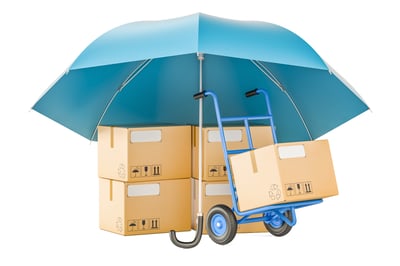3 tips for managing cargo insurance claims
As an importer, you are likely aware of the kind of insurance you need. But in recent years, claims instances have been on the rise. What kinds of scenarios can lead to a claim—and more importantly, how can your freight forwarder help?
Watch out for damaged cargo
Our client, Pam, works at a sizeable retail import company that regularly ships a variety of goods internationally. Many of these goods are fragile and require specific packaging.
One day, Pam took a call from one of her receivers. They wanted to let her know that some of the cargo was damaged when it arrived. As Pam asked more questions, she learned the fragile packages had been mislabeled and therefore mishandled.
Pam listened to her receiver voice their concerns, and then got to work figuring out what to do next. The damage would trigger a claim, she was certain. But what did that mean?
All about claims
When moving freight, remember that as the importer, while you can ship without insurance, you do so at your own risk. Some carriers offer third-party liability insurance and sometimes, just by having the shipper declare value, they will automatically charge for insurance.
Still, as the importer or owner of the goods, it may be in your best interests to procure insurance. Without additional insurance coverage, in the event of damage or a shortage triggering a claim, carrier’s liability would apply (although in some cases, carriers limit their coverage to less than the declared value of your goods.)
When it comes to cargo insurance, there are two broad claims categories, within which all claims are processed in fundamentally the same way:
- Carrier insurance claims. These claims occur whenever the shipper has not purchased separate cargo insurance. If cargo damage is proven, the carrier may pay out full amounts. A positive resolution depends on the relationships with the carriers, shippers, consignees and forwarders.
- Insurance claims. In this case, the client has chosen to buy separate cargo insurance. Premiums are paid to secure cargo insurance. This means the client is in control and there is a very good chance they can recoup their losses.
[In ocean shipping, there is also a claim known as General Average. This is beyond the scope of this post, but you can read all about it here.]
As it turned out, in Pam’s case part of the difficulty was that she had mistakenly thought her goods were more comprehensively covered by the carrier. Because of this assumption, Pam had not sought out separate cargo insurance for the goods. She was certain she'd be facing a carrier insurance claim.
Help is only a phone call away
Pam called us for help in her situation, and our team got on it right away. The first helpful piece we discovered was that while Pam herself had not sought out cargo insurance for the fragile goods, her second-in-command had. This meant that it was merely a miscommunication that caused Pam the most strife; her team had already secured cargo insurance.
Pam was relieved to hear this. Now instead of facing a bleak reality wherein she'd only receive a small payout from her carrier and be on the hook for thousands of dollars in damages, she saw that instead her company had already been paying into cargo insurance. Because of this, Pam was able to deal with the claim as an insurance claim. This meant she would receive a cheque from the insurance company for the total insurable amount (minus the freight charges and deductible.)
After all was said and done, the claim was resolved in a satisfactory way for Pam, as she was paid out the full replacement value of her damaged goods.
Even better, we debriefed the situation with Pam and her team. It was important to Pam that they learn from the experience and use it to set themselves up for success going forward.
Here are our top three tips to help manage a cargo insurance claim:
- Always insert detailed comments on the Proof of Delivery document you receive from the carrier – and be specific.
- Take pictures of all damage done as soon upon arrival as possible.
- Inform your freight forwarder or Cole International rep immediately with copies of the damage reports.
A proactive approach keeps claims at bay
Pam's story articulates the need for a proactive approach when it comes to your freight. The good news is, by planning preventively and working with your freight forwarder, it's possible to avoid ending up in a situation like Pam's.
Keep your cargo happy—and claims at bay—with these final three tips from our freight forwarding team:
- Consider your needs and whether it is in your best interest to procure cargo insurance. Premiums are generally reasonable and claim settlement is often a quicker process than via carrier claims.
- Ensure your shipment is correctly packaged to make it transport friendly.
- Use a reliable freight forwarder who can guide and assist you through the process.
Ready to connect with a seasoned professional who can guide you through all the steps of your cargo’s journey? Contact our freight forwarding team today.
Freight solutions. It's what we do.

Latest Articles
- 7 ways Canadian importers reduce risk when ordering overseas
- Watch out for these extra charges on your freight bill
- Key differences between duty drawbacks and duty refunds for importers
- Mitigating container shortages and rising shipping prices for ocean imports
- How Canadian importers benefit from end use tariff codes and conditional relief

